Many of us are about to begin a new semester of online teaching. The learning curve for moving my lecture units last semester was STEEP, so I compiled some sort of hand over notes to people approaching this for the first time. I hope it's useful for someone somewhere.
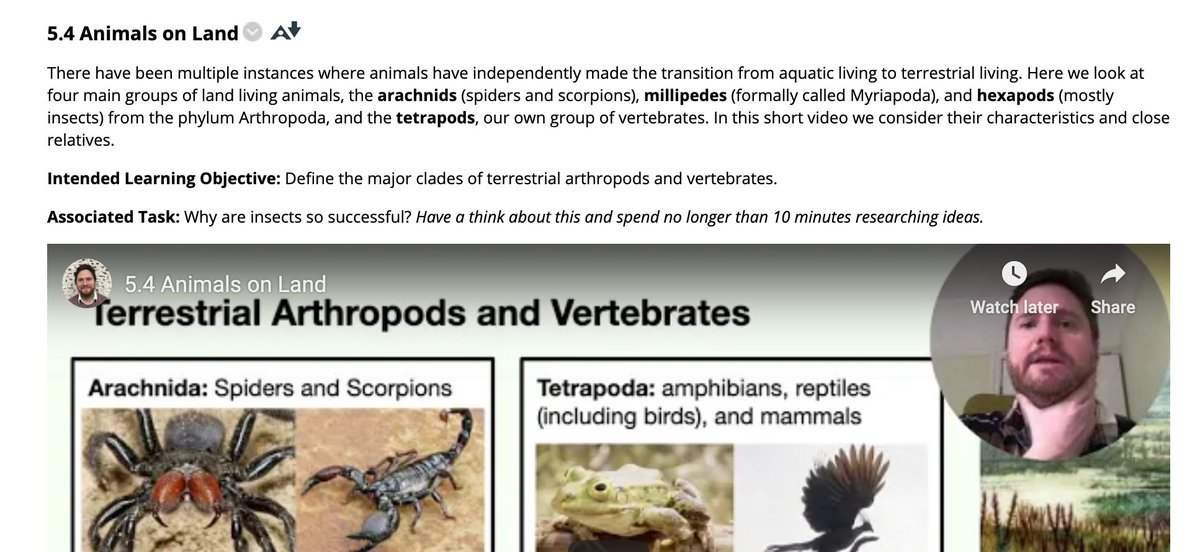
They are easy to use (point and click), provide instant feedback to students, and allow the instructutor to receive anonymous feedback.
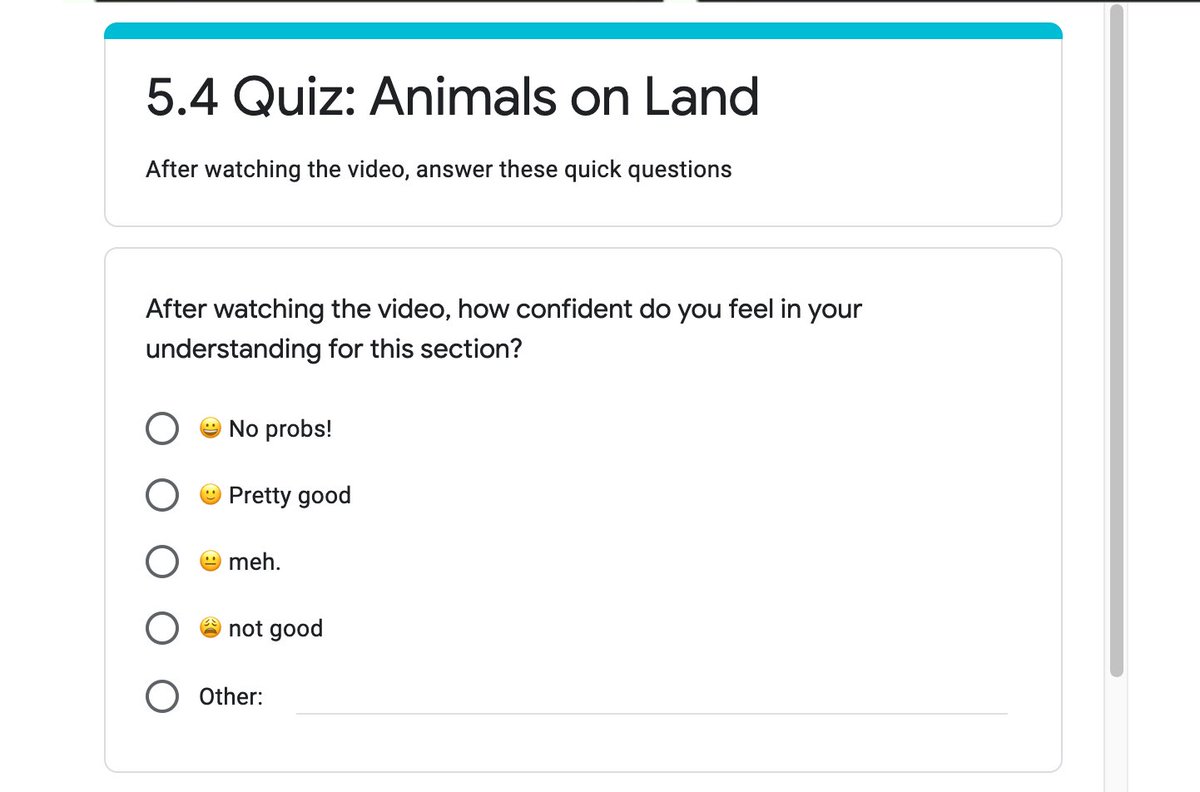
One problem with distance/virtual lectures is those awkward minutes at the start when people are joining the Zoom session slowly, stilted and interupted chat. Why not use the oppertunity to GET HYPE! (sound on) \U0001f4e2\U0001f4e2\U0001f4e2\U0001f389#BlendedLearning \U0001f389\U0001f4e2\U0001f4e2\U0001f4e2 pic.twitter.com/jAU7oNy404
— Rob Sansom (@Sansom_Rob) October 20, 2020
https://t.co/3y8XxqlBEI
Final live session of "How to Grow a Planet" and the students showed their appreciation in visual form. Really touched, thanks guys. Look closely and you can see the tear in @Sansom_Rob's eye @UoM_EES pic.twitter.com/7mZeDtWphv
— GilesNJohnson (@GilesNJohnson1) December 16, 2020
More from Education
In many ways, I don't blame folks who tweet things like this. The media coverage of the schools situation in Covid-19 rarely talks about the quiet, day-in-day-out work that schools have been doing these past 9 months. 1/
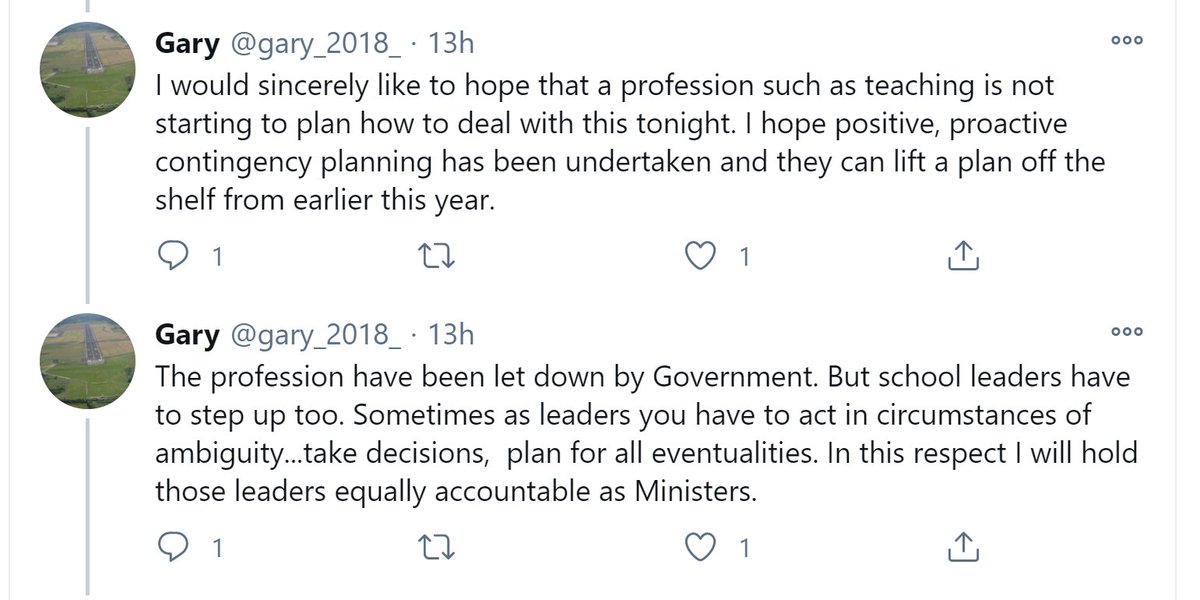
Instead, the coverage focused on the dramatic, last minute policy announcements by the government, or of dramatic stories of school closures, often accompanied by photos of socially distanced classrooms that those of us in schools this past term know are from a fantasy land. 2/
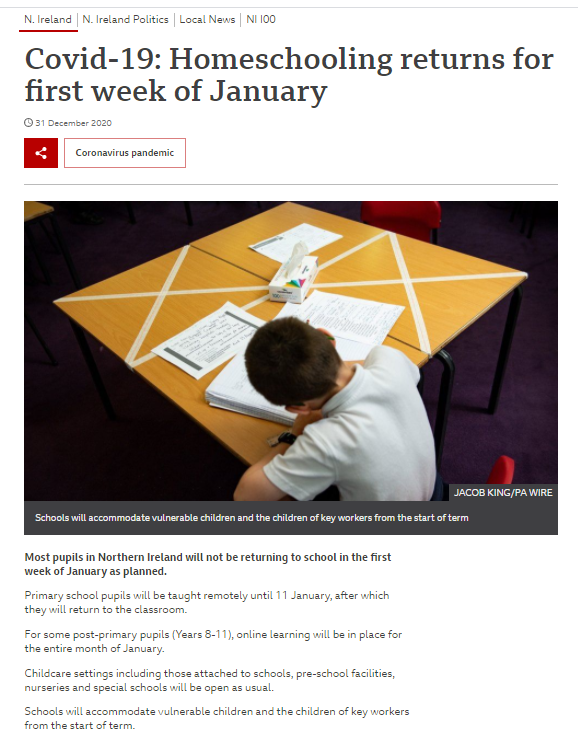
If that's all you see & hear, it's no wonder that you may not know what has actually been happening in schools to meet the challenges. So, if you'd like a glimpse behind the curtain, then read on. For this is something of what teachers & schools leaders have been up to. 3/
It started last March with trying to meet the challenges of lockdown, being thrown into the deep end, with only a few days' notice, to try to learn to teach remotely during the first lockdown. 4/
https://t.co/S39EWuap3b
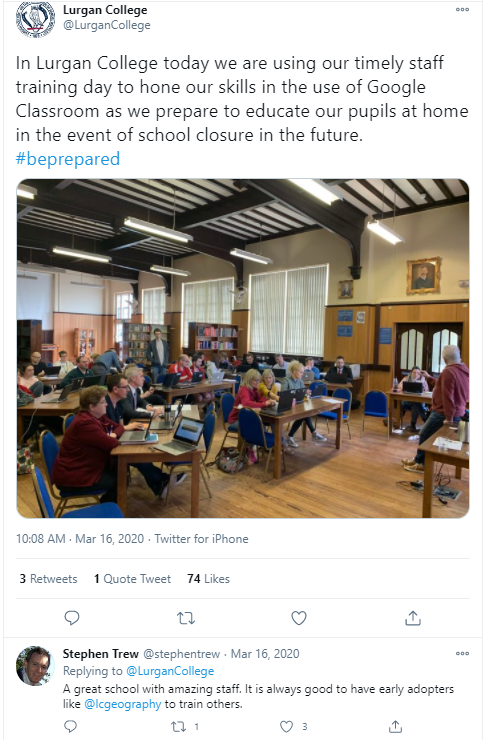
In Lurgan College today we are using our timely staff training day to hone our skills in the use of Google Classroom as we prepare to educate our pupils at home in the event of school closure in the future. #beprepared pic.twitter.com/E0LQkYqvBD
— Lurgan College (@LurganCollege) March 16, 2020
I wrote a policy document for our staff the weekend before our training as we anticipated what was to come, a document I shared freely & widely as the education community across the land started to reach out to one another for ideas and support. 5/
https://t.co/m1QsxlPaV4

You May Also Like
USC's Interactive Media & Games Division cancels all-star panel that included top-tier game developers who were invited to share their experiences with students. Why? Because there were no women on the
ElectronConf is a conf which chooses presenters based on blind auditions; the identity, gender, and race of the speaker is not known to the selection team. The results of that merit-based approach was an all-male panel. So they cancelled the conference.
Apple's head of diversity (a black woman) got in trouble for promoting a vision of diversity that is at odds with contemporary progressive dogma. (She left the company shortly after this
Also in the name of diversity, there is unabashed discrimination against men (especially white men) in tech, in both hiring policies and in other arenas. One such example is this, a developer workshop that specifically excluded men: https://t.co/N0SkH4hR35


























